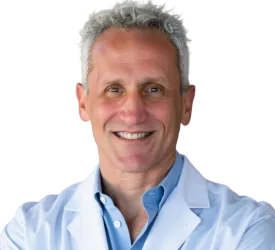There are several different conditions that can cause a patient to require shoulder replacement surgery. A few of the most common include:

Shoulder Replacement Surgery
Alleviate Your Pain
Shoulder replacement surgery performed by Dr. Edward Seade at our Austin, TX, practice can alleviate the painful symptoms of injuries, different forms of arthritis, and degenerative joint disease. The shoulder is a ball and socket joint in which the rounded end of the humerus (upper arm) fits into a socket within the shoulder blade. Shoulder replacement surgery involves replacing one or both of these components to restore comfort and function. If physical therapy and medication fail to alleviate your symptoms, you may be a candidate for shoulder replacement surgery.

Our Shoulder Expert
Types of Shoulder Replacement Surgeries
Full Shoulder Replacement
Partial Shoulder Replacement
Candidates for Shoulder Replacement Surgery
Candidates suffer from severe shoulder pain that interferes with regular daily activities such as showering or taking items out of the pantry. They may experience pain even when resting, sometimes severe enough to keep them awake at night. These patients also experience a loss of motion or weakness in their shoulder joint. Patients who exhibit these symptoms and see no improvement with the use of anti-inflammatory medications, injections of cortisone, or physical therapy, may be good candidates for replacement surgery. They must must be in good overall health, with no allergies to anesthesia.
Dr. Seade will conduct an in-depth evaluation to determine if surgery is the right solution for you. He will review your medical history and perform a physical exam, testing the strength, motion, and stability of your shoulder. He will ask questions about the pain in an effort to determine the cause. The doctor may need x-rays or an MRI to achieve a detailed view of the shoulder joint.

Reasons for Shoulder Replacement Surgery
Osteoarthritis
This type of arthritis most commonly affects patients over age 50. The shoulder becomes stiff and painful due to the wearing of the cartilage cushioning the joint.
Rheumatoid Arthritis
This condition involves chronic inflammation of the synovial membrane around the joints, which causes the cartilage to become damaged, resulting in pain and stiffness.
Rotator Cuff Tear
The rotator cuff consists of tendons and muscles that support the shoulder joint. If a large rotator cuff tear has been present for a while, it can cause changes in the joint. These changes can lead to arthritis or the complete destruction of the joint.
Severe Fractures
Mostly affecting older patients with osteoporosis, this involves the shattering of the head of the humerus. Replacing the head with a metal ball can save the joint.
